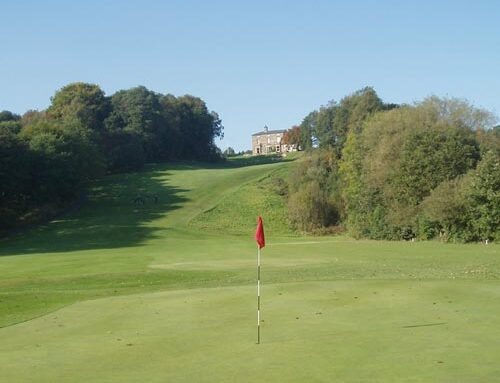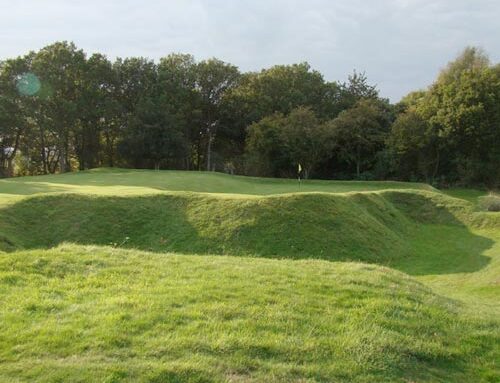Royal North Devon Golf Club
Bideford, England, United Kingdom

Westward Ho! celebrated its 150 year anniversary in 2014 and its timeless grandeur grows the more starched and pressed and sterile the modern game becomes.
Founded in 1864, Westward Ho! has received praise for more than 125 years. Consider these comments beginning with Horace Hutchinson in 1890 who wrote:
‘A course very full of hazard and of incident, where the most condign punishment visits the ball which is not perfectly played, both in point of distance and direction.’
Bernard Darwin Country Life’s article in 1947 called it ‘one of the greatest of all courses’ and ‘for fun and adventure of the game, there is no more ideal piece of golfing country in the world.’
J.H. Taylor, aged 90, upon gazing across his beloved links, said ‘This is the finest view in Christendom.’
Sir Peter Allen of Westward Ho!, ‘…like Brancaster and Ballybunion, remains a supreme example of natural seaside golf.’
Pat Ward-Thomas for The Guardian in 1955, explained why Westward Ho! is enjoyed equally by all classes of player: ‘Although it can be a considerable test of skill, especially when the rarely absent wind is strong, for there is no false protection of trees, buildings, or undulating land, it is not fearsome in the sense of long carries or lost balls in thick rough, heather or woods. Neither is there any wearisome toiling of trolleys up and down hills. Most of the fairways are vast and spreading, but let no one think that fours will come easily because of that, for judgment of distance is of the very essence on this flat land and the greens, particularly when fast, can be most deceptive. But the land is not as flat as it seems, for the shallow hollows and rummels can produce awkward stances and tricky little shots from around the greens.’ The description could well apply to the Old Course at St. Andrews, eh?
Today, one rarely hears the same glowing praise for RND (as the members refer to it). Given that little has changed at Westward Ho! over the past ninety years except for the addition of some back tees, how can that be?!
Unfortunately, perceptions have changed since Darwin’s day – for the worse. There is a perverse fascination with conditioning, a.k.a. the ‘Augusta National syndrome.’ Westward Ho! is laid over common land where sheep and livestock freely roam so conditions are more ‘nuanced’, which is not necessarily a bad thing. Also, ‘fairness’ reared its ugly head in the latter half of the 20th century and rendered many “lay-of-the-land” courses quirky and old-fashioned. ‘Visibility’ became another virtue cherished by modern critics who favor ‘framing’ and shots that suit one’s eyes. Much of RND falls outside of these (false) parameters of greatness. Split the sixth fairway and be asked to hit a mid iron from a squirrelly lie off a hummock to an uphill green, is that fair? Can the minute thirteenth green be a ‘fair’ target on such a beastly long hole? What about holding the front to back fifteenth green downwind? Not seeing the bottom of the flag at the one shot sixteenth?
Golfers with the above concerns and who ascribe to the new paradigm are better served to avoid Westward Ho!. For those traditionalists who cherish variety and challenge in an inspired setting, Westward Ho! remains one of the dozen most engaging links in world golf.
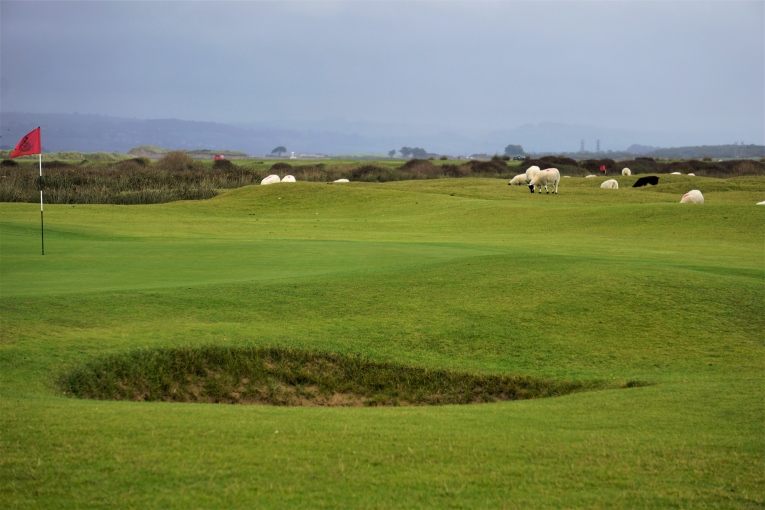
Westward Ho! is an appealing mix of big dunes going out along the coast and tame but scintillating land coming in.
The course’s evolution occurred primarily from 1864 through 1908 and the scintillating variety of challenges that today’s golfer faces date to that era. Retired lieutenant George Molesworth and cronies decided to build a course here in the late 1850s after viewing the tall dune beside today’s sixth tee and the lumpy-bumpy land. Its beauty and natural properties rivaled anything in Scotland and captivated their imagination. Old Tom Morris arrived in 1864 from Prestwick and the fact that he made many subsequent visits over several decades suggests a profound love for the links. His original 18 hole, 5,500 yard design featured ten holes that crossed one another. That wasn’t a problem because golf was in its infancy in England with much less play than in Scotland.
Yet, clearly things needed to change and Old Tom made significant alterations in 1887. He still confined the golf to the most exhilarating parts of the property, which featured big dunes, crumped land and sea rushes. Eventually it became necessary to expand to the flatter grazing land and holes one, two, three, seventeen and eighteen were created, pushing the course over 6,200 yards. The Haskell ball’s arrival in 1902 would directly lead to Herbert Fowler’s finishing touches in 1908, which were lavishly praised by Bernard Darwin.
The cadence of today’s course is through grazing land for the first two holes but the remainder of the front side is genuine links along Pebble Ridge, which separates the course from the Bristol Channel. Holes ten through twelve are played amid the famous rushes, giant tufted marsh plants that have been known to impale golf balls and shatter good scores. Thirteen is a field unlike any other – a glorious piece of flat ground. A mixture of three fine sandy holes follow before returning to the meadowlands coming home. Never do more than two holes run in the exact direction and the grounds are punctuated by a variety of hazards, small and large bunkers, revetted and sleepered; loathsome rushes, meandering burns and hummocky landforms, all of which are frequently in the direct line of play. Westward Ho’s ever shifting environment accounts for much its enduring appeal.
More than one first time visitor standing on the first tee has wondered, ‘Where is the golf course?’ For the author, that’s a supreme compliment but others may differ. The opening pair of holes have been unfairly branded as dull over the years. Attributes at the first include its sense of place, due in part to a complete absence of framing. Additionally, a ditch crosses the fairway, tracks along the right before darting in front of the green and terminating along its left side. Generally played into a quartering wind off the left, it is a fine hole on which to limber up. The second green is basically a gentle puff, rising one to two feet from the natural grade, exquisite in its simplicity. It is one of a trio of upturned saucer greens, so described in the club yardage book. The fact that it is less severe than either the pushed-up thirteenth or sixteenth greens doesn’t make its requirement for judgement of distance any less problematic. Playing a proper running shot beneath the prevailing wind and resting it on the putting surface is no mean feat. Then commences a remarkable eleven hole run of superlative golf unlike any in the world – see if you don’t agree.
Holes to Note
Third hole, 420 yards, Crest; Overshadowed by the famous fourth, this hole features two cross hazards that are more challengingly located today than the fearsome Cape bunker. Their uncompromising position is deliciously old-fashioned – would you expect anything else from a club that will celebrate its double centenary before any other club in England? Good players might try and force the issue and drive into the left or right rough on the side opposite the day’s hole location but what’s most critical is to avoid the sandy graves.

This fierce central bunker with its vertical sod-stacked face and a sister bunker beside it define the fairway 150 yards before the green.
Fourth hole, 385 yards, Cape; Given its age, Westward Ho! serves as a window into the game’s past and present. Back in the day of hickories and gutta percha the play was to lay up in front of the mighty fortressed bunker some 170 yards off the tee. The adoption of the Haskell ball in 1902 changed everything and golfers in 1910 experienced the thrill of flying their tee balls over the massive hazard with the rubber core ball. Move forward a century and the carry is fearsome on the rare day when a strong wind is against and the new championship tee is in play. Given that the tee shot is less daunting with 460cc heads, perhaps more people will appreciate the fetching approach which requires a well-judged pitch, often from a dicey lie to a green delightfully tucked into a little dell. The green complex epitomizes some of the tricky recovery shots to which Ward-Thomas referred.
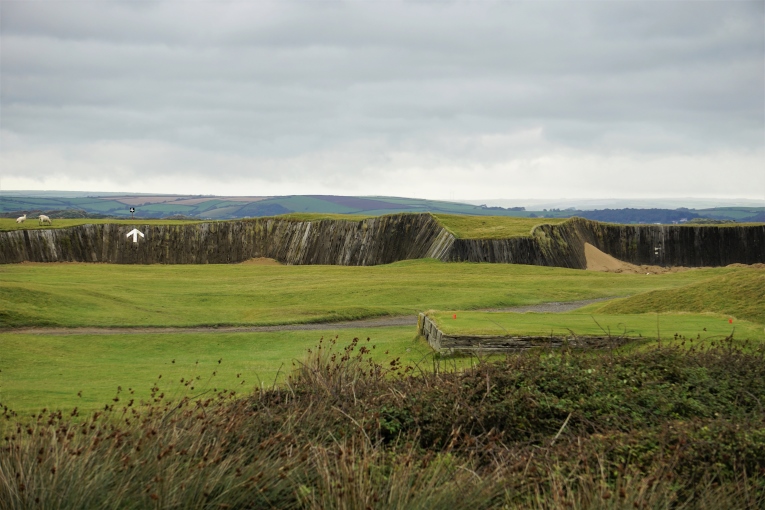
One of the most famous hazards in the United Kingdom traces its roots to – no surprise – Old Tom Morris. Frank Pennick dubbed it ‘the champion sand-bunker of England’. Supporters of the 6th at St. Enodoc and the 4th at Royal St. George’s might quibble.
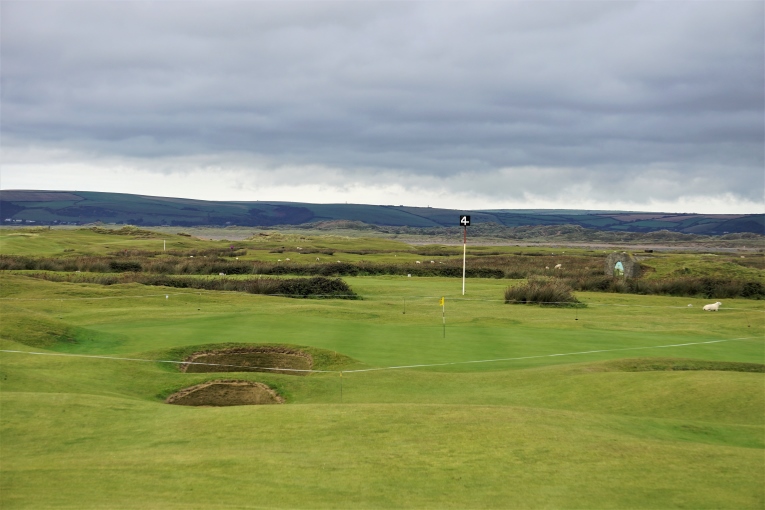
The fairway dips and a most attractive semi-punchbowl green arises. Seen over the right shoulder of the green is …

… this mural of English great JH Taylor who grew up in Northam and worked at Westward Ho! before going on to win the Open Championship five times.
Fifth hole, 165 yards, Table; This one shotter plays up a dune to a flag flapping in the breeze. Interestingly enough, the two shortest one shotters on the course (here and sixteen) do an abrupt about face in direction from their prior hole. That means nothing if there isn’t wind but here on the western tip of England, wind is a major consideration most days. On the tee below the golfer is sheltered from the full extent of the wind, making proper club selection elusive. Seeing the gob-smacked expression on the golfer’s face when his tee ball is stood up by the wind and unceremoniously dumped into one of the fronting greenside bunkers is a proper welcome to links golf. The canted, compartmentalized green, severe fall-offs back and left and a series of well-placed deep bunkers make for a difficult par – and more than an occasional ‘other.’
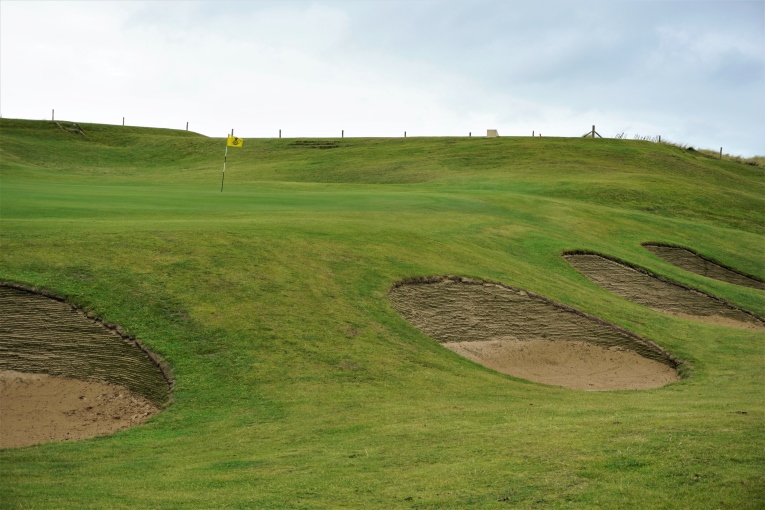
The well defended 5th green occupies a high spot in a windy location, exacerbating the difficulty in club selection from the tee down below.
Sixth hole, 415 yards, Alp; Rivaling the fifth tee at Sunningdale Old as the most glorious spot in English golf, it features the Bristol Channel left, raw, authentic linksland ahead and Bideford Bay in the distance. Because the author swoons every time he reaches this point, he commissioned Mike Miller to paint the landscape seen below. Pounding surf on the beach left and and cawing sea gulls in low flight complete the sensory assault. Horace Hutchinson’s words of advice ring as true today as in 1890, ‘it is generally necessary to pick out a certain spot – not merely a certain line – to which to drive the ball. And the ball once driven there, what a blessed reward is ours!’ So true as we see below.
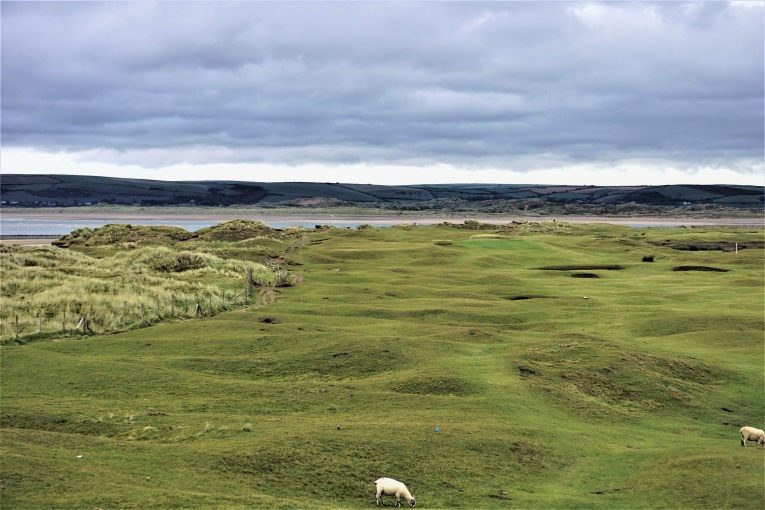
One of the author’s handful of favorite fairways in world golf: lumpy-bumpy contours and three central bunkers confound the golfer.

… an approach from the left comes at the green on an oblique angle and requires a carry over this deep pit. String is used across the course to keep livestock well back from the greens.
Seventh hole, 440 yards, Lifeboat; This is surely one of the game’s original standout dogleg holes … as well as being one of the game’s standout doglegs! The fairway peels slightly away from the coastline and ends some 340 yards ahead. For the first time in the round, the golfer must carry sea rushes. The target to the left across the rushes is a sloping green that most attractively rubs off a sand dune. This might well be the toughest hole at RND and the one that incorporates the best and quirkiest qualities of this great course.

This view from behind the 7th green highlights the sandy nature of the terrain. Westward Ho! and Brancaster on the east coast feature sleepered bunkers and the two courses stand as England’s tribute to natural seaside golf.
Royal North Devon Golf Club
Bideford, England, United Kingdom
Eighth hole, 235 yards, Bar; For such a traditional links, it is interesting that three of its four one shotters require a forced carry. This is the most daunting and highlights the addition of championship tees over the past decade that has stretched RND to more than 7,000 yards. For decades, the course measured 6,600 or so but the club is proud of its heritage of asking quality players to hit every club in the bag and these days that requires more length.
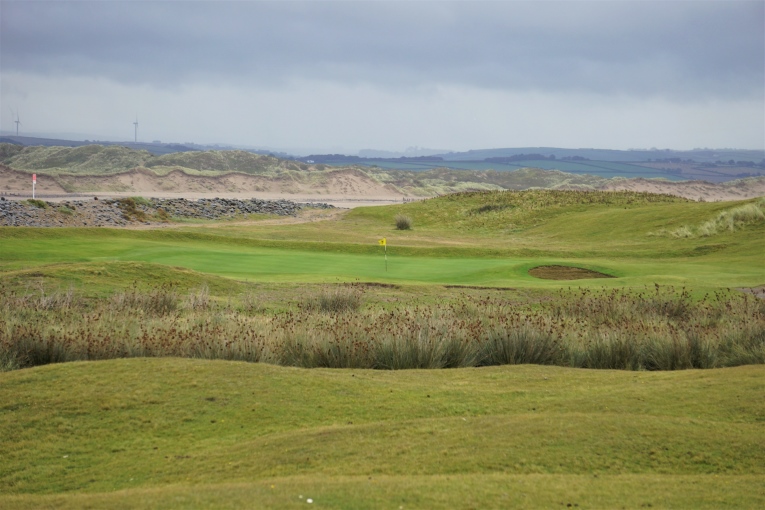
Over the years, the 8th has suffered the most damage from storm surges and Mother Nature. Hopefully, the construction of the storm wall will mute future damage to this splendid hole at the end of the property.
Ninth hole, 520 yards, Dell; From the tee an Elysian Fields vista unfolds and the golfer is encouraged to swing away with the going getting progressively more fascinating. Modern equipment makes the hole reachable but three bunkers wall off access from the center of the fairway. Rather, the thinking golfer needs to sort out how to use the ground and the prevailing wind which quarters from the right to loop a ball past the right hazard and onto the putting surface. Similarities with the fourteenth at St. Andrews exist and Tom Doak singles this hole out as one of the great reachable par fives. Only the player that uses the mound on the right can find and routinely hold the shallow 21 yard deep green. Few links boast a par five of such sterling quality. Ultimately, it is RND’s rash of world class holes (four, six, seven, ten, eleven, sixteen and this one) that inform the golfer in no uncertain terms just how relevant the course remains. What a great, great pity that the Open Championship was never contested here.

Trying to fly a ball from 200+ yards out onto a green with so little depth is nonsensical. Better to figure out how to scoot past the right bunker and then …
Tenth hole, 410 yards, Rush; Regardless of whether a hickory or steel shafted club is in hand, the disconcerting sight of the Great Sea Rushes directly in front of the tee has unsettled golfers for over a century. The five foot tall rushes are only on the left side of the fairway, so the temptation is to steer one’s tee shot right where three fairway bunkers define the task.
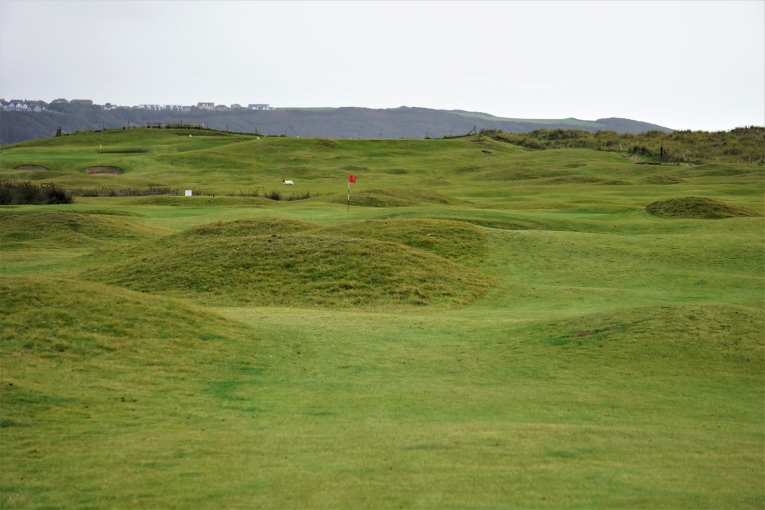
The elevated 5th green left and 6th tee right provide the backdrop for the approach to the 10th across spendidly broken ground.
Eleventh, 395 yards, Appledore; Rushes surround the eleventh. Generally played in a cross breeze from the right, it is a particularly feared hole in golf lore. In contrast to the broad, expansive nature of the previous holes, it seems claustrophobic. Though there is ample fairway, that’s of small consolation to the trembling golfer who fears the finality of a mishit into the rushes. Finding a sub-400 yard hole that has defiantly stood the test of time like this one has is rare indeed. Every course should have one such genuine position hole that makes you clinch (but probably not two).
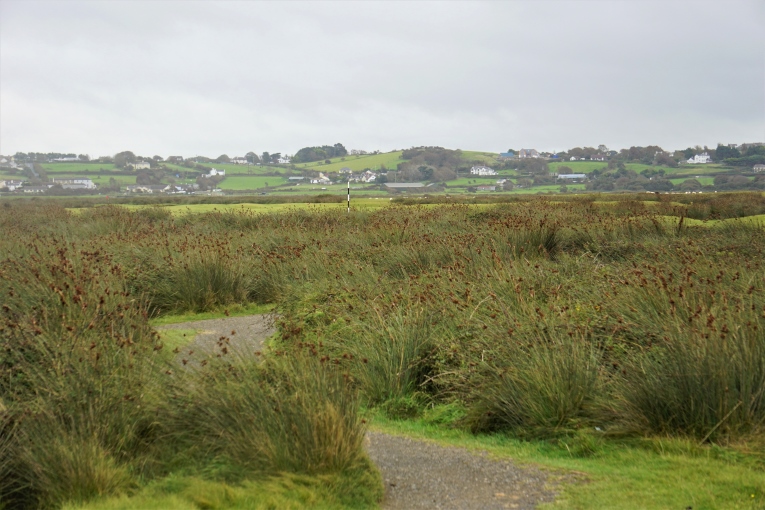
One of the most alarming tee balls in all of England; the golfer needs to be at peace with his swing when arrives at the tee!
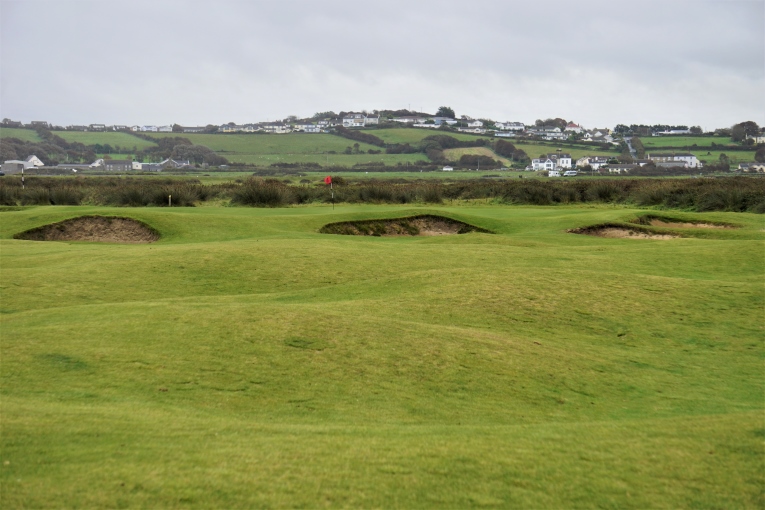
The fairway becomes progressively lumpy nearer the green. In all respects, this modest length hole has withstood the onslaught of technology remarkably well.
Twelfth hole, 425 yards, Trap; Simplicity itself. Death in the form of the rushes along the left; down the right, gobs of room. Cleverly, Fowler constructed a series of three bunkers that buffer the green’s right, making an approach from that side infinitely more difficult.
Thirteenth hole, 475 yards, Lundy; This concludes a stretch of four holes with the high to low point being a mere six feet. Not a golfer alive realizes he has just played across such level land, in part because of the verticality of the sea rushes that effortlessly lend genuine terror to the proceedings. One thing many of its members readily appreciate is how fabulous this course is to grow old upon. Exhilaration surely is evident while playing along Pebble Ridge but the merit of these flattish holes also deserves praise not only for their golf qualities but because they make the walk more pleasurable.

This top-hat, criminally small green tantalizes. Given that the green is a scant 24 paces deep (only the 9th green is shallower), a finely judged low rolling approach is a thing of great beauty.
Fifteenth hole, 430 yards, Church; Fairway bunkers are employed by modern architects to define strategy and demarcate the hole. Golfers have become accustomed to them as guideposts but what happens when a fairway is devoid of such (no pun intended) trappings? A certain amount of confusion can ensue and such is the case at fifteenth where a bunkerless vista gives few hints at one of the more important fairways to hit during the round. High shoulders feed off fronting greenside bunkers left and right and the putting surface runs from front to back. Balls not clipped from the fairway invariably find their way to the back of the green. As such, front hole locations are the toughest. Like the Old Course at St. Andrews, an appealing mystery accompanies so many shots at Westward Ho! A thoughtful golfer is bound to ask: do modern architects show us too much?

Not that it is readily apparent standing on the tee but a series of depressions along the right and the fallaway green mean that the left center of the fairway is optimal for one’s approach.
Sixteenth hole, 160 yards, Punch Bowl; The bottom of the flag isn’t quite visible from the tee, which prompted Darwin to write in Country Life in 1947, ‘The hole has the quality of semi-blindness in which distinguished students of architecture discover the surpassing merit and difficulty of some of the St. Andrews holes. I never fully realized before how right they were. To stand on that 16th tee and imagine a good, strong wind blowing from the left, was to feel once more a shiver of apprehension down the spine, and see, in the mind’s eye, the ball, half-heartedly struck, toppling gently down the bank into the bunker inevitably waiting for it. So I came away with no doubt at all that it is a very great short hole indeed.’ The great shame is few holes of this length which prey on both mind and body are found among closing stretches anymore.

As seen from the left, the putting surface falls away on all sides, making this one of the most elusive greens to consistently hit.
The last two holes are across flat grazing land and as such incapable of providing the thrill of playing over roly-poly landforms. Nonetheless, neither is a weak or indifferent hole. Many a golfer has come undone trying to reach the penultimate green in two across the beach access road. In fact, one of the handful of best hole locations on the course is found on the back of the seventeen’s tiny lower plateau. The Home hole marches away from the sea and toward the iconic white clubhouse which dates back over a century. There’s a ditch to clear if one is to find the rolling green and tee balls off the fairway greatly diminish that outcome. This ultimate approach provides plenty of anxious moments and is something different from the undertakings of the previous three hours.
From a historical perspective, Westward Ho! has no peer in England – it was the first golf club incorporated there in 1864 and it is the oldest club that occupies its original ground. Inside the rambling clubhouse there’s a patina of history and heritage, all sorts of memorabilia and an honor board for the ages. Yet, for a club so steeped in tradition, the welcome is exceedingly gracious. Even Brits comment on a very special club atmosphere. Frank Pennick, a member for a time, wrote, ‘There has never been any doubt in my mind as to where and when I have enjoyed a week’s golf holiday most. …. For pure enjoyment of fine but not too serious golf and excellent company, give me the Open Meeting at Westward Ho! in August every time.’

Golf is for making friends (of all sorts, just ask the lady above in the 18th fairway!) and few clubs offer as warm a welcome as RND.
Let the last words go to Fowler who wrote in 1912, ‘Westward Ho! means the greatest reward for good and the most severe penalty for bad play to be found on any links, and at the time of writing reigns as the finest course in the United Kingdom.’ High praise indeed and it remains far closer to the truth to this day than most people realize. Put another way, who wants to wager that Horace Hutchinson, Bernard Darwin, Frank Pennick, Pat Ward-Thomas, JH Taylor and countless other keen players and students of the game were all wrong?
The End


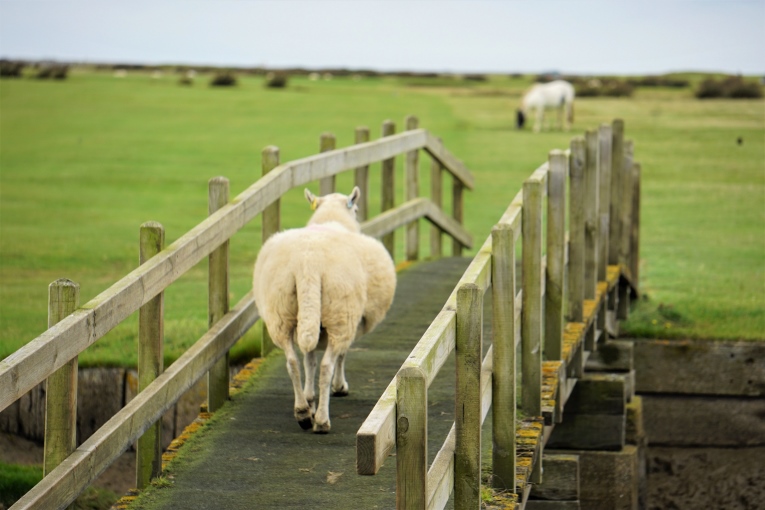
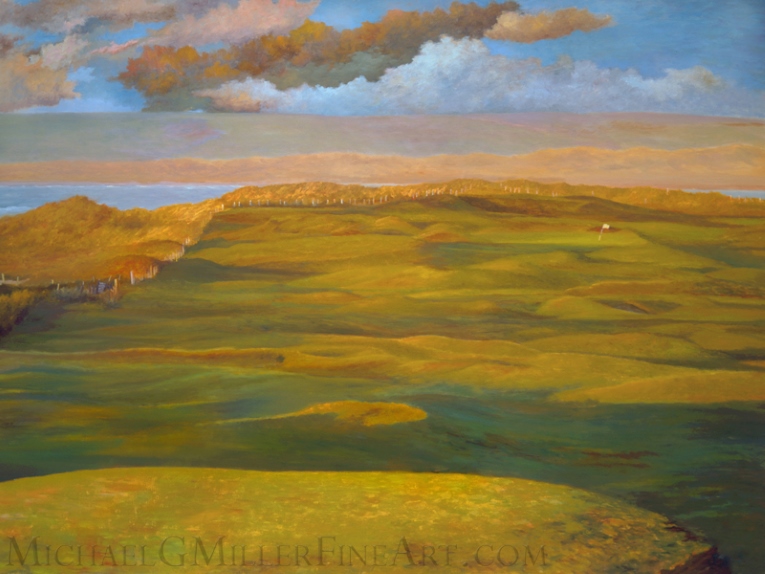
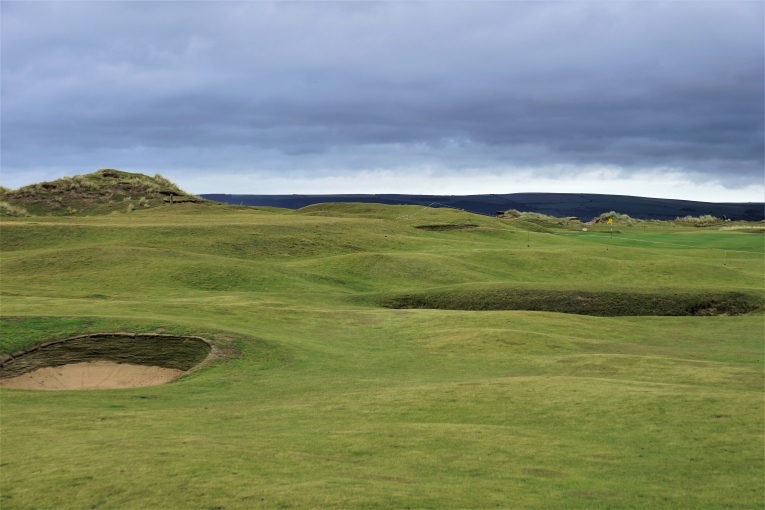
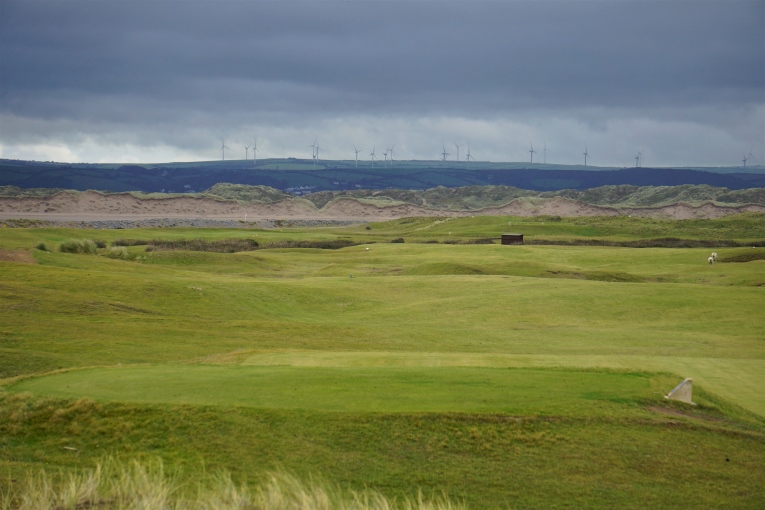

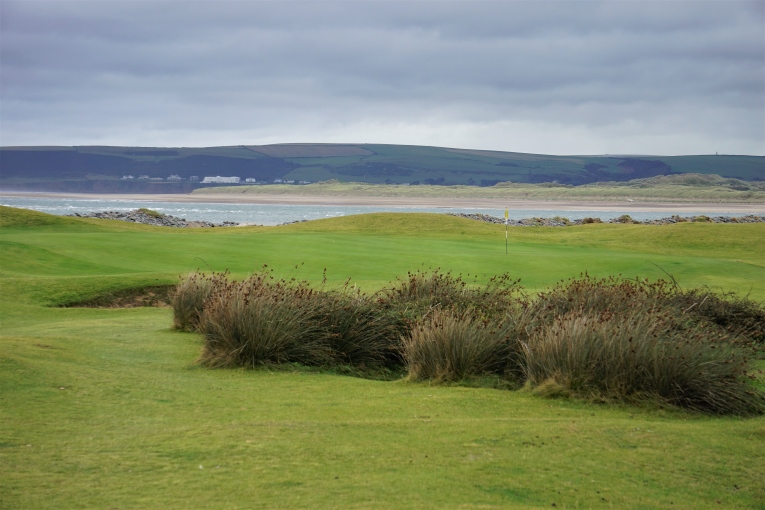


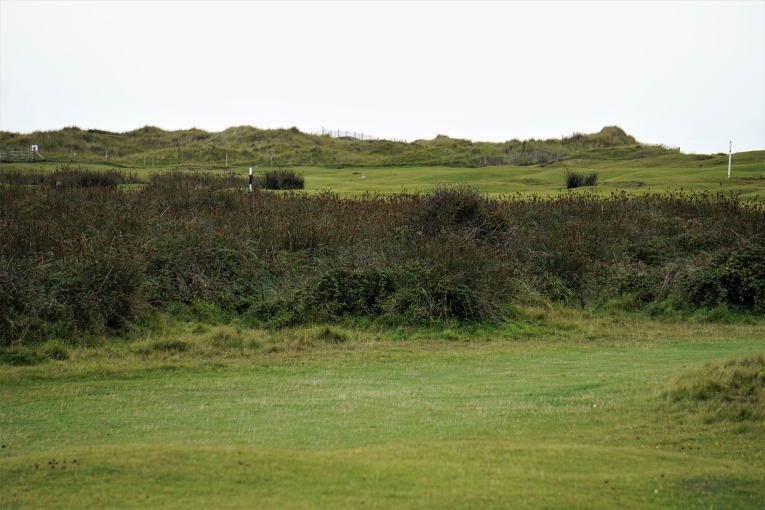


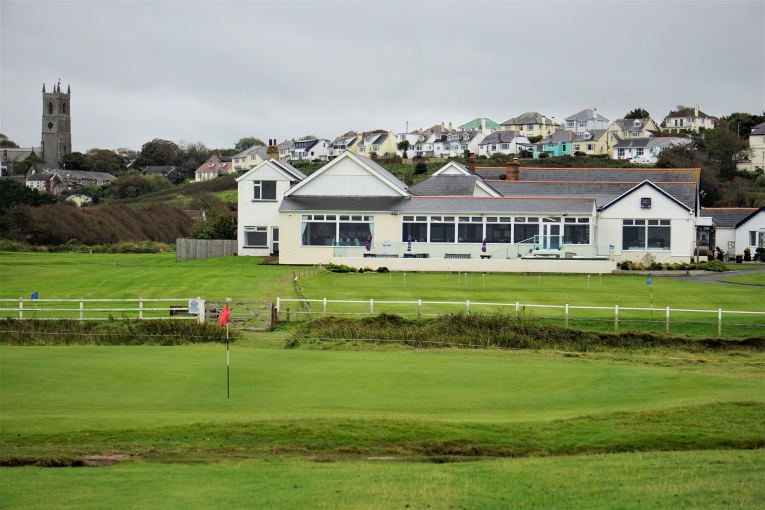

![Minchinhampton (Old) [2016]](https://golfclubatlas.com/wp-content/uploads/2018/09/Minchinhampton-500x383.jpg)
![St. Enodoc (Church) [2017]](https://golfclubatlas.com/wp-content/uploads/2017/11/St.-Enodoc-500x383.jpg)
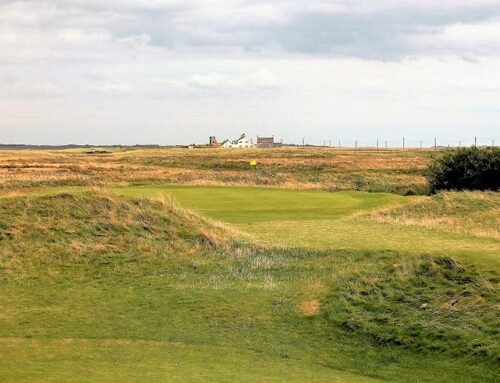
![Sunningdale (Old) [2014]](https://golfclubatlas.com/wp-content/uploads/2017/11/Sunningdale-Old-Course-500x383.jpg)
